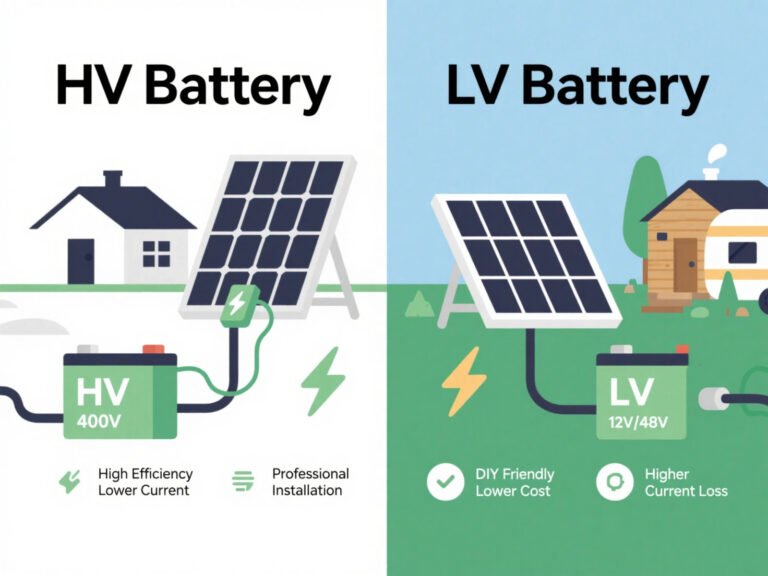
High Voltage DC Systems
High-voltage solar systems rely on stepping up the direct current (DC) voltage, typically between 150 volts to 1000 volts or more, which reduces current, thus reducing energy loss and increasing efficiency.
How the System Works:
Solar panels are connected in series to increase the overall voltage.
Low output current reduces resistance and power loss in the wiring.
Compatible inverter converts high-voltage DC to AC for distribution.
Efficiently transfer power over longer distances within the facility or to the grid.
Features:
Very high efficiency due to low electrical current.
Less wire size and lower installation costs.
Ideal for large systems, such as solar farms or commercial buildings.
Better power transfer over distances within the system.
Reducing heat loss within the wiring.
Disadvantages:
Requires compatible components (inverters, switches, protection).
More complex in design and implementation compared to traditional systems.
Higher safety risk and requires strict electrical isolation and protection.
Difficulty of partial expansion: Any modification may require a complete redesign.
Less suitable for small home use.
Real-world data and figures (as a sample):
| Item | Typical Value |
|---|---|
| Used Voltage | 600 to 1000 V DC |
| Electrical current | 30–50% less than conventional systems |
| Wire loss | 40–60% less |
| Optimal distance for power transmission | Up to 10 km |
